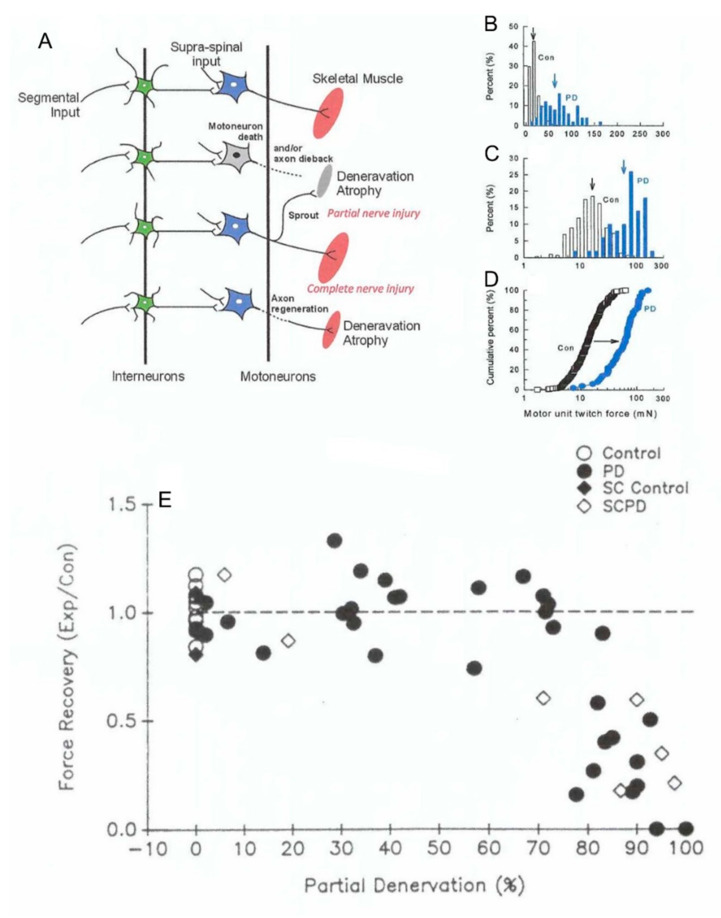Figure 7.
Motor unit enlargement after partial denervation of muscles. Figurative illustration of muscle denervation, reinnervation after complete nerve injury, and compensatory sprouting after partial nerve injury (A). The skewed distribution of motor unit (MU) twitch forces in control tibialis anterior (TA) muscle is shifted significantly (p < 0.05) to the right to larger values after partial denervation by cutting the L5 spinal root (B). The shift is more obvious when the MU forces are plotted on a logarithmic scale (C) and as cumulative distributions (D). The cumulative distributions demonstrate that all MUs in the partially denervated muscle increase by the same factor such that the large MUs include many more muscle fibers by sprouting than the small MUs. This five-fold increase is maximum as shown in (E). by the sharp decline in muscle force recovery when partial denervation of the muscle (numbers of nerves innervating the muscle) exceeds about 80%. The sprouting in partially denervated muscles (PD) is the same whether the spinal cord is intact or hemisected (SCPD). Adapted from [109].

